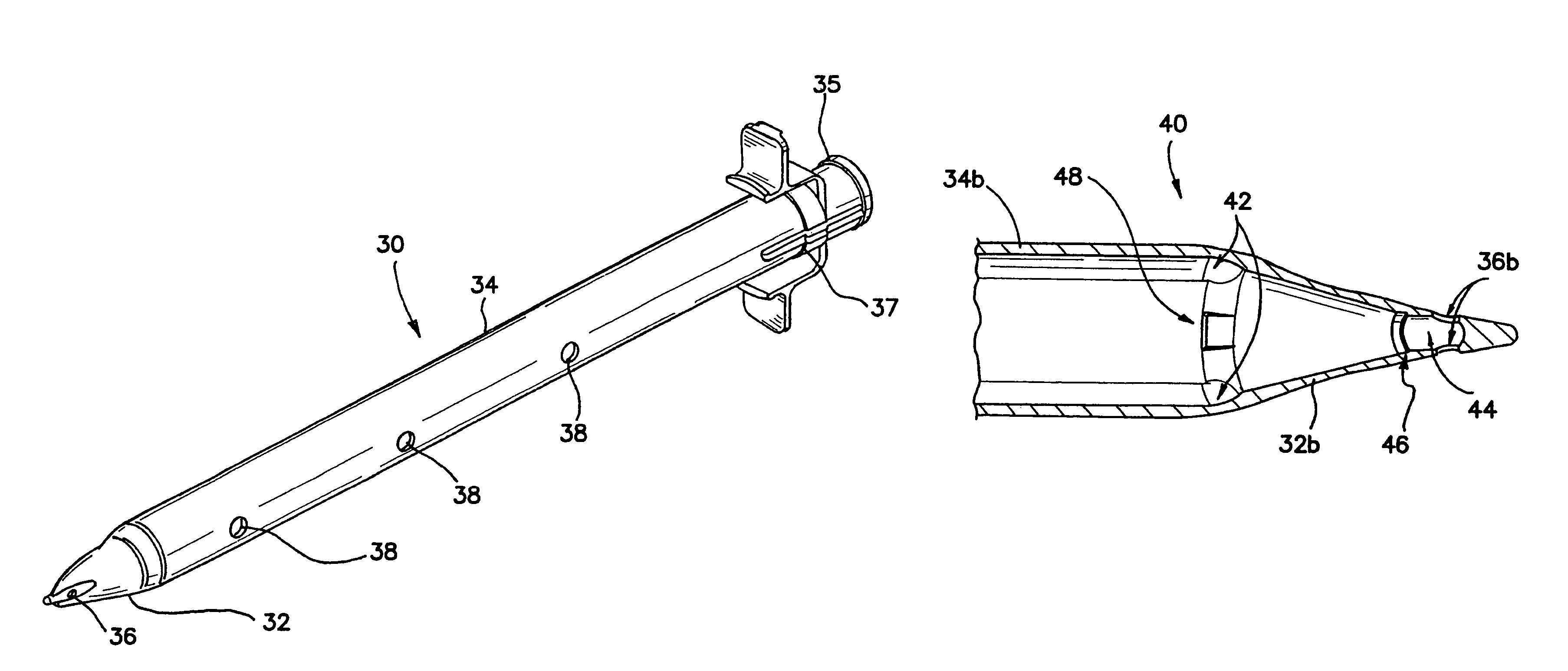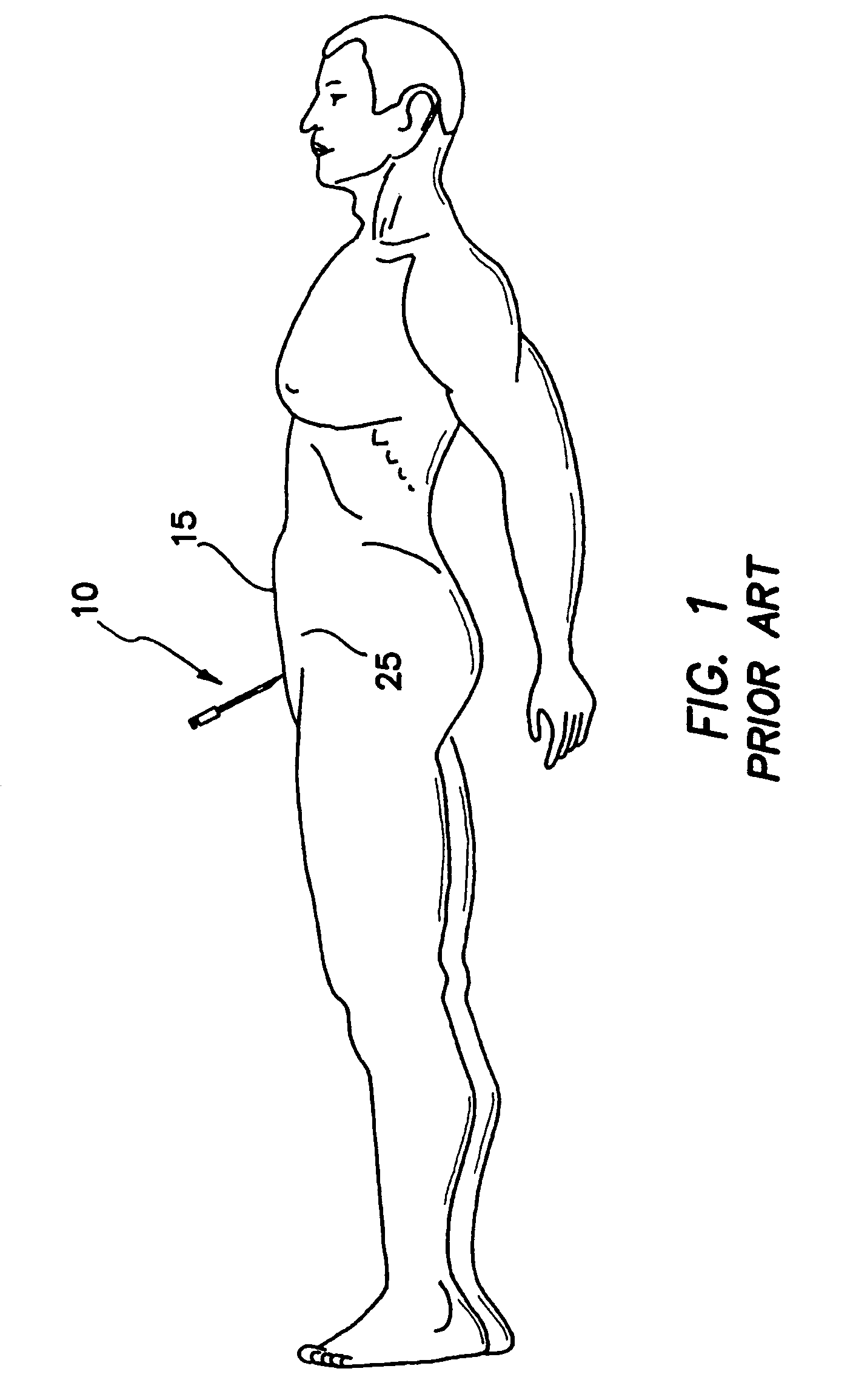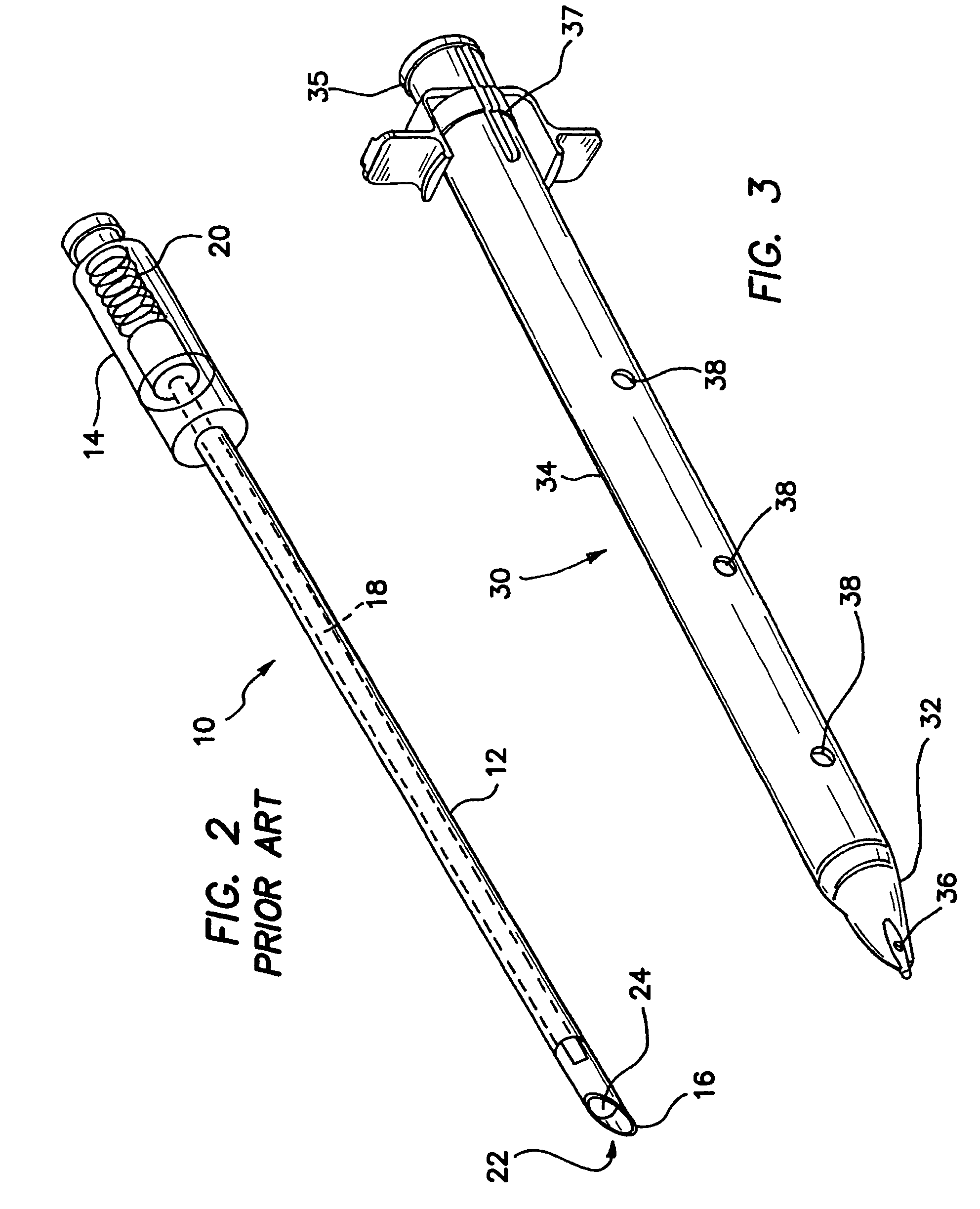Insufflating optical surgical instrument
a surgical instrument and insufflation technology, applied in the field of surgical instruments, can solve the problems of less than optimal arrangement, inability to establish access to a non-inflated peritoneal cavity, and difficulty in achieving the effect of minimal injury risks
- Summary
- Abstract
- Description
- Claims
- Application Information
AI Technical Summary
Benefits of technology
Problems solved by technology
Method used
Image
Examples
Embodiment Construction
[0038]Referring to FIG. 1, there is shown a typical laparoscopic abdominal surgery where an inflation needle 10 is inserted through a body or abdominal wall 15 and into an abdominal cavity 25. A gas is passed through the needle 10 to create a space within the abdominal cavity 25. This procedure is referred to as insufflation. The needle 10 is referred to as an insufflation needle and the gas supply is referred to as an insufflation gas. The insufflation needle 10 is placed through the body wall 15 blindly. In other words, there is no direct visualization of the procedure from the inside of the body wall 15. As explained earlier, the current procedure may inadvertently damage organs and tissues underlying the body or abdominal wall 15 such as major blood vessels and the intestinal tract. It is not uncommon for there to be internal structures attached to the internal side of the body wall 15. This is especially so in the case of the abdominal cavity 25. Portions of the intestines, col...
PUM
 Login to View More
Login to View More Abstract
Description
Claims
Application Information
 Login to View More
Login to View More - R&D
- Intellectual Property
- Life Sciences
- Materials
- Tech Scout
- Unparalleled Data Quality
- Higher Quality Content
- 60% Fewer Hallucinations
Browse by: Latest US Patents, China's latest patents, Technical Efficacy Thesaurus, Application Domain, Technology Topic, Popular Technical Reports.
© 2025 PatSnap. All rights reserved.Legal|Privacy policy|Modern Slavery Act Transparency Statement|Sitemap|About US| Contact US: help@patsnap.com



